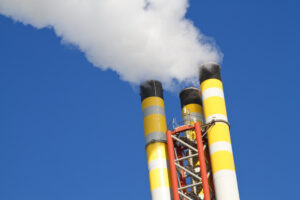On January 11, 2024, the EPA announced a proposal to strengthen Clean Air Act (CAA) standards for large municipal waste combustors (LMWC) that burn municipal solid waste (MSW). LMWCs are incinerators that combust greater than 250 tons per day (tpd) of MSW.
“If finalized, the updated standards would reduce emissions of nine pollutants, including smog- and soot-forming sulfur dioxide and nitrogen oxides, by approximately 14,000 tons per year, improving air quality for overburdened communities living near these facilities,” states an EPA news release. “These proposed standards reflect current technologies available to control pollution in a cost-effective fashion.”
The nine pollutants targeted are:
- Cadmium (Cd)
- Mercury (Hg)
- Lead (Pb)
- Particulate matter (PM)
- Hydrogen chloride (HCl)
- Sulfur dioxide (SO2)
- Polychlorinated dibenzodioxins and dibenzofurans (dioxins/furans or PCDD/PCDF)
- Carbon monoxide (CO)
- Nitrogen oxides (NOX)
“The proposed standards would apply to 57 facilities with 152 units that have the capacity to combust more than 250 [tpd] of [MSW],” the news release adds. “Nearly 4 million Americans live within three miles of these large facilities, which are disproportionately located in low-income communities and communities of color.”
“President Biden believes every person deserves clean air to breathe and the opportunity to lead a healthy life, and EPA’s proposal is just the latest action to achieve this vision. By reducing harmful pollution and improving air quality, this rule will also advance environmental justice for nearby communities already overburdened with pollution,” said EPA Administrator Michael S. Regan in the release. “EPA is committed to working with communities and state, local, and Tribal governments to ensure that large facilities burning municipal waste utilize the most up-to-date and cost-effective control technologies to reduce pollution and protect public health.”
Under the CAA, the EPA is required to evaluate these standards every five years. The last revision occurred in 2006.
Specific amendments
These proposed amendments reflect the results from a reevaluation of the maximum achievable control technology (MACT) floor, a five-year review, and the removal of startup, shutdown, and malfunction (SSM) exclusions and exceptions. These proposed amendments also streamline regulatory language, revise recordkeeping and electronic reporting requirements, reestablish new and existing source applicability dates, clarify requirements for air curtain incinerators, close a 2007 proposed reconsideration action, correct certain typographical errors, make certain technical corrections, and clarify certain provisions in the New Source Performance Standards (NSPS) and emissions guidelines (EGs). Specifically, the major proposed amendments would do the following:
- Revise all emissions limits in the EG, except for CO limits for two combustor subcategories and all nine emissions limits in the NSPS.
- Remove the alternative percent reduction standards and NOX emissions averaging allowance for existing sources, and replace them with a numeric concentration-based emissions limit. This would establish a consistent approach to compliance for all facilities.
- Remove SSM exclusions and exceptions, and significantly revise monitoring provisions during these periods.
- Streamline regulatory language to be more accessible than the 1995 large MWC rule. Primarily, convert text describing emissions standards and performance testing requirements from paragraphs into tables to facilitate easier implementation and understanding of the requirements.
- Revise recordkeeping and electronic reporting requirements for source owners and operators to submit electronic copies of required performance test reports, performance evaluation reports, semiannual compliance reports, and annual reports through the EPA’s Central Data Exchange (CDX) using the Compliance and Emissions Data Reporting Interface (CEDRI). The electronic submittal of the reports addressed in this proposed rulemaking will increase the usefulness of the data contained in those reports and will improve availability and transparency.
- Reestablish new and existing source applicability so that large MWC units currently subject to the NSPS would become “existing” sources under the proposed amended standards and would be required to meet the revised EG by the applicable compliance date for the revised guidelines. Large MWC units that commence construction after the date of this proposal or commence a modification on or after the date six months after promulgation of the amended standards would be “new” units subject to the more stringent NSPS emissions limits.
- Clarify requirements for air curtain incinerators that burn only wood waste, clean lumber and yard waste, or a mixture of these materials. The EPA is proposing to eliminate the Title V permitting requirement for air curtain incinerators that aren’t located at a major source or subject to Title V for other reasons.
“The estimated benefits of this action far outweigh the expected pollution control costs,” the Agency news release continues. “After accounting for compliance costs of the rule, EPA estimated the net present value of health benefits from the proposed rule, due to reductions in particulate matter and ozone alone, to be up to $14 billion over 20 years. Reductions of mercury, lead and other hazardous air pollutants required by the proposal are expected to result in additional unquantified economic and public health benefits. EPA believes this action is also likely to advance environmental justice by reducing existing disproportionate and adverse effects on overburdened communities.”
Additional information
Comments on the proposed rule must be received by March 25, 2024, and can be made on the Federal eRulemaking platform under Docket #: EPA–HQ–OAR–2017–0183. Additional information about the proposed rule can be found on the EPA Large Municipal Waste Combustors (LMWC): New Source Performance Standards (NSPS) and Emissions Guidelines website.

